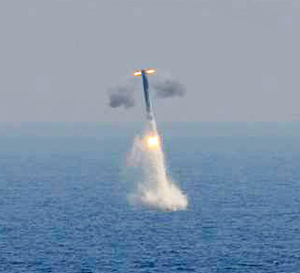SOURCE: AFI

India’s decision for Project-75I submarines sparked debate, with some arguing for a Vertical Launch System (VLS) integration for sub-sonic cruise missiles like BrahMos and Nirbhay. Traditional missile tubes require submarines to surface for launch, compromising stealth. VLS allows submerged launches, maintaining discretion.
Traditional launchers require surfacing to launch missiles, compromising a submarine’s stealth. VLS allows submerged launches, maintaining discretion. VLS enables launching multiple missiles in quick succession, overwhelming defenses or saturating targets. VLS offers a wider range of launch angles, allowing for attacks from various positions and over land obstacles.
India’s existing BrahMos and Nirbhay sub-sonic cruise missiles could have been integrated, leveraging domestic development and potentially reducing costs. VLS can accommodate future advancements in missile technology, allowing for integration of newer, potentially hypersonic, cruise missiles.
India’s existing BrahMos and under-development Nirbhay sub-sonic cruise missiles could have been integrated into the Project-75I submarines with a VLS system. This would have leveraged India’s indigenous missile technology and potentially reduced reliance on foreign suppliers for weaponry.
However, the contenders for Project-75I, TKMS’s U212 and Navantia’s S-80 Plus, did not offer VLS integration for cruise missiles because they were not build for unlike KSS-III Batch 3 submarine developed by S Korea.
Navy’s Project-75I might have prioritized features excelling in ASW, AIP while potentially sacrificing VLS integration to make case for the Nuclear attack submarines in the future.
While the Indian Navy’s decision has its justifications, the potential benefits of a VLS with sub-sonic missiles like BrahMos or Nirbhay are significant. Future advancements in VLS technology and domestic missile development could influence choices in upcoming submarine projects.